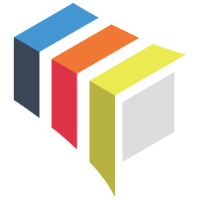QUESTIONS? CALL:
+1 (833) BOODSKAp
Smart Water Management with Boodskap's IoT Platform
PRODUCT DESCRIPTION
- Smart water management using IoT technology transforms how cities monitor and optimize their water distribution systems. By leveraging IoT-enabled devices and sensors, municipalities can achieve real-time visibility and control over water supply, consumption, and quality. This advanced approach reduces water waste, ensures a reliable supply, and supports sustainable urban development. Boodskap's IoT Platform as a Service (PaaS) offers comprehensive solutions for smart water management, integrating various sensors and devices to deliver actionable insights and predictive analytics.
- Boodskap’s IoT platform enables city planners and water management authorities to collect, analyze, and act on data from various IoT sensors. The platform’s robust data analytics and visualization tools provide real-time monitoring of water flow, pressure, and quality, enabling informed decisions to optimize distribution, detect leaks, and ensure safe drinking water.
- Water Flow Meters: Devices that measure the flow rate of water through pipes.
- Pressure Regulators: Systems that maintain optimal water pressure in the distribution network.
- Water Quality Analyzers: Instruments that assess the chemical and microbial quality of water.
- Gateway Devices: Facilitate communication between water sensors and the central control system.
- Flow Sensors: Measure the flow rate of water in real-time.
- Pressure Sensors: Detect changes in water pressure to identify leaks or blockages.
- pH Sensors: Monitor the acidity or alkalinity of water to ensure safe drinking conditions.
- Turbidity Sensors: Measure the clarity of water, indicating the presence of suspended particles.
- Chemical Sensors: Detect contaminants and ensure compliance with water quality standards.
- LoRaWAN: Provides long-range connectivity for water sensors deployed across large urban areas.
- NB-IoT: Ensures reliable communication for low-power water monitoring devices.
- Zigbee: Ideal for creating a mesh network of water sensors within the city.
- MQTT (Message Queuing Telemetry Transport): Lightweight messaging protocol used for real-time data transmission between water sensors and the IoT platform.
- A city using Boodskap’s IoT platform installs flow sensors and pressure sensors in its water distribution network to monitor flow rates and detect leaks. Water quality analyzers equipped with pH, turbidity, and chemical sensors are placed at key points in the water supply system. All collected data is transmitted to the Boodskap platform via LoRaWAN and NB-IoT. The platform analyzes the data, providing insights into water flow, pressure anomalies, and quality metrics. City planners and water management authorities can view these insights on a dashboard, enabling them to make timely decisions on leak repairs, pressure adjustments, and quality interventions. This leads to reduced water waste, improved supply reliability, and ensured water safety.
- Real-time monitoring helps quickly detect and repair leaks, reducing water loss.
- Optimized water distribution ensures a consistent and reliable supply.
- Continuous monitoring of water quality parameters ensures safe drinking water.
- Automated data collection and analysis streamline water management processes. By leveraging Boodskap’s IoT platform, cities can significantly enhance their water management processes, leading to reduced water waste, improved supply reliability, and ensured water quality.

